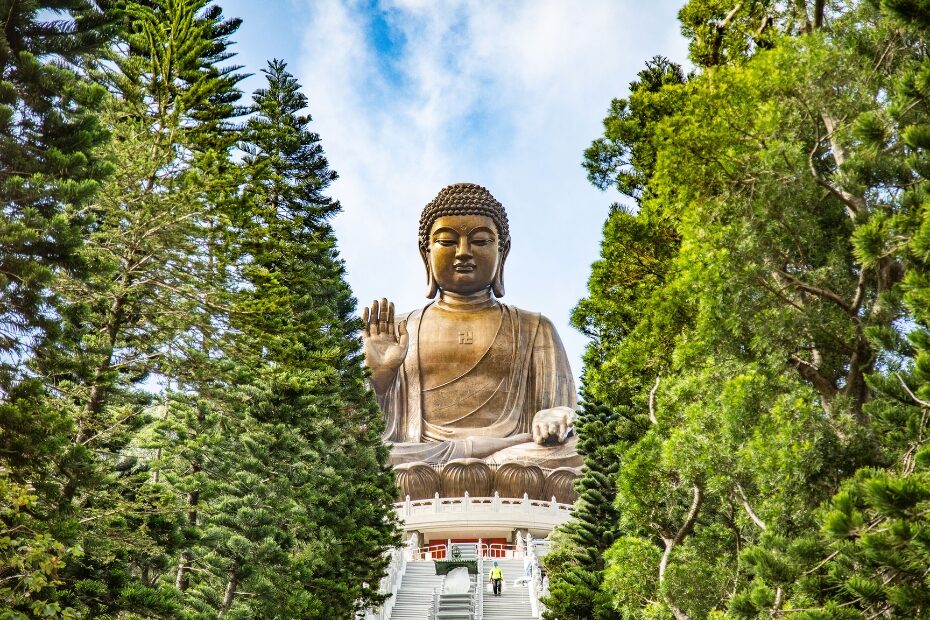PHOTOS BY Beatrix Malan – www.atscollective.com
In this column, we’ve been reporting on places across Lantau that you might want to visit or revisit… everywhere from Tung Chung Fort to Inspiration Lake. And this month, we’ve decided to focus on The Big Buddha, aka Tian Tan Buddha, not least because the world’s ‘biggest sitting Buddha statue, built outdoors’ is newly renovated and looking better than ever.
A true icon of Hong Kong, it’s incredible to think that The Big Buddha is a relatively recent addition to the landscape. Construction began in 1990 and finished on December 29, 1993, an auspicious day, which the Chinese believe to be the day of the Buddha’s enlightenment. Enthroned on a lotus on top of a three-platform altar, the statue is 34 metres tall and weighs over 250 metric tons, making it one of the five largest Buddha statues in China.
Situated near Po Lin Monastery atop Mount Muk Yue, The Big Buddha was built to symbolise harmony – between mankind and nature, people and faith. His right hand is raised in the mudra of ‘imparting fearlessness,’ representing his ability to protect his followers, while the left rests open on his lap, in the mudra of ‘granting wishes,’ symbolising blessings bestowed. On each of his palms is a wheel of dharma signifying that the Buddhist truth is eternal.
A benign and protective presence on the Lantau hills, The Big Buddha is a source of inspiration and wonderment to believers and nonbelievers alike, and to a large extent it is his beautifully crafted face that draws us in. Modelled after the Buddha Vairocana of the Longmen Caves in Henan province, the face is full and serene with a kindly smile, and every feature has a symbolic meaning. The broad forehead and elongated ears signify both virtue and wisdom. The dome of hair and the pearl on the head represent wisdom; the lotus eyes and new-moon eyebrows symbolise compassion. Between the eyebrows, a soft curl signifies that the Buddha is preaching the truth.
It took master sculptor Hou Jinhui of the Guangzhou Institute of Fine Arts two years to craft the scale plaster model of The Big Buddha. While the original idea was to build the statue out of reinforced concrete, it was eventually cast in 202 bronze pieces, each around 10 millimetres thick. The face was cast in a single, 5-metric-ton piece, measuring 4.3 metres by 5.8 metres, in an attempt to portray the true splendour of Buddha, and achieve a perfectly smooth finish.
While every effort was made to ensure that The Big Buddha’s surface coating would not be susceptible to fading and corrosion, the harsh Hong Kong climate eventually took its toll and, some 30 years later, a complete overhaul was actioned.
Renovations began in June 2020 with the main goal to remove the oxidation layer and pollutants on the statue, repaint the protective coating, and restore the icon’s solemn and compassionate appearance. The last step in the renovation process – the staircase leading up to The Big Buddha – is nearing completion.
Time to go pay your respects!

